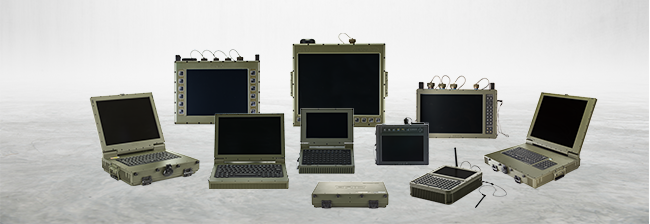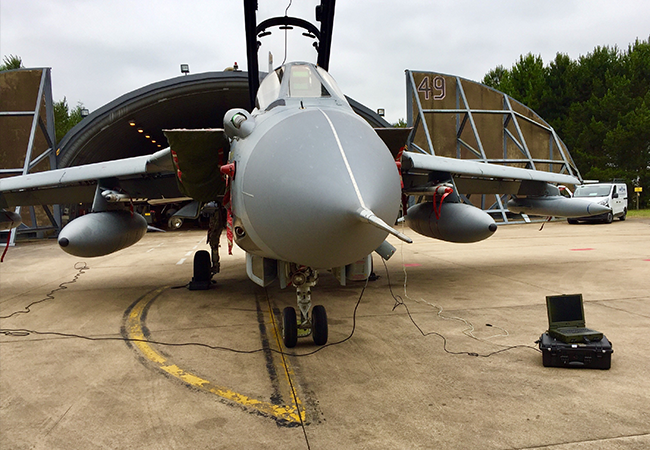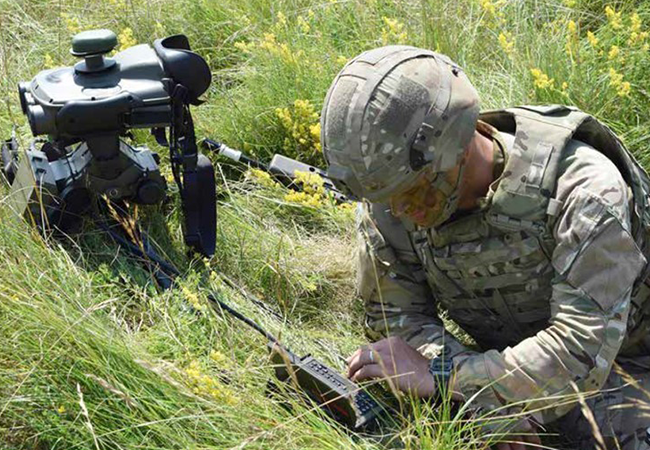It might be something you haven’t given much thought to, but identifying the most suitable screen size is often the best place to start when selecting the right solution for your rugged computer requirement. In this blog we outline the factors that need to be considered when choosing the best screen size for your computer, and how GRiD can help you in that selection.
GRiD develops a wide range of rugged devices for military requirements, and is familiar with all of the variables that go into selecting the most suitable computer for a customer. Screen size is an important consideration in this list, and will be the difference between being able to fit a computer in your pocket and having to wheel one out each time you want to use it.
We ask our customers key questions when guiding them through the selection process, which will determine the best screen size for their particular needs, and we run through some of them here.

Where will the device be used?
Where the device will be used – be it an aircraft hangar, integrated into an armoured vehicle, or carried by a dismounted soldier – will be a deciding factor in screen size selection.
Not only is there the physical size of the screen to bear in mind – our 19” GRiDCASE 1595 will not fit in uniform pockets however hard we try – there is also weight that needs to be factored in, because the bigger the screen, the more it weighs.
There are exceptions to this rule when very lightweight, thin panels are used in a screen but in most cases, the larger the panel, the heavier it gets, and this is why display size is so important because it ultimately dictates the portability of the computer.
The necessary electronics to power it, and the chassis required to house the screen, will add to the weight, and in the case of a laptop, this screen size is always going to match the main base where the keyboard and the motherboard sits, which will contribute to a further increase in weight.
If weight is not so much of a consideration and the device will be used on a trolley or desk or vehicle-mounted, then our larger screened products could be selected. If a soldier needs to be able to quickly pull the device out their rucksack or pocket, however, then smaller and lighter devices will need to be down selected.
Ultimately, the size of the product is influenced by where it needs to be stored and where is needs to be used.
What will it be used for?
The use of the laptop or tablet is the next question to ask when selecting a screen size, including the software, operating system and apps that will be required to run on the device.
Small screens are suited to very portable applications, whereas large screens are typically used when lots of data needs to be displayed, or for fixed applications during which the device does not need to be whipped out and then stashed away quicky and regularly.
The software that will be required to run on the product also needs to be considered.
You might think you want a 7” tablet, but if the software has been designed to run on a 27” wide screen desktop computer, when you shrink that down to a 7” tablet, all of the icons will be tiny, or the map you’re looking at will be difficult to read. Screen readability is critical for armed forces personnel carrying out missions.
On the other hand, if you are planning to run an application that is usually used on a mobile phone on a 19” screen, it is likely that there will be a significant waste of real estate on the display, as there will be only a handful of buttons rather than many apps, menus and tabs that you would typically have on a big screen.
You need to ask yourself this: are you buying a product to run software that already exists or are you writing new software to suit the hardware? This is an important question to ask and one that is often overlooked.
If for safety the screen has to be a minimum size, then that can eliminate a large proportion of our product line from your options. On the other hand, it might be mandatory that it is pocket carried or mounted on the soldier’s chest, so that will eliminate a proportion of the product line too.
The relationship between the display size and the application is therefore critical, and something that needs considering at the beginning of your device selection.
 |
 |
What other features do you want from your device?
Other factors that could influence the screen size include power requirements, the number of connectors needed, and ancillary features.
While screen size may be a secondary concern for these requirements, a larger screen size is likely to be needed.
A larger main base or chassis will be needed to accommodate either extra functionality or more ports and connectors, and a larger screen size will be part of that selection.
Do you need to run a certain legacy operating system or include ancillaries such as a DVD drive? This can dictate which device is selected because only limited products can include these features.
You may not even require a screen for your application; in one example, we partner with a specialist aircraft display manufacturer. Their customer mandated the display that had to be used and, in this case, our customer supplies the display assembly to us, we then integrate that onto our main base assembly and build and test the complete assembly before shipping it back to the customer.
Touchscreen is another consideration to be factored in – GRiD provides resistive touchscreens on many products, so this will also help whittle down the products to choose from if this feature is required.
Read more about resistive vs capacitive touchscreens here.
Display resolution is the final thing to consider when selecting the best display for your requirements. Firstly, it is important to note that GRiD does not use standard commercial panels in its screens in order to ensure reliability and ruggedness, guarantee availability, and manage obsolescence, and instead relies on industrial-grade components.
Specifying industrial panels helps ensure that screens meet environmental, EMC, display aspect ratio, resolution, size, and weight requirements – all of these need to line up to make a panel workable for GRiD.
These panels are increasingly becoming higher resolution, and full HD is not uncommon. Typically the customer will specify both the aspect ratio, be it 4:3, 16:9 or 16:10, and resolution of the screen dependant on their software and whether it is written around a certain screen resolution.
Conclusion
As with all aspects of our rugged computer design and manufacture, GRiD is an expert when it comes to screen requirements, be it the size or other important features of them.
We use this knowledge to help guide customers through their selection process, ensuring that the correct product is chosen for each one’s unique requirements.
If you want to talk to us about your screen requirements, get in touch now:
Telephone us on +44 (0)1628 810 230 or drop an email to sales@griduk.com.

